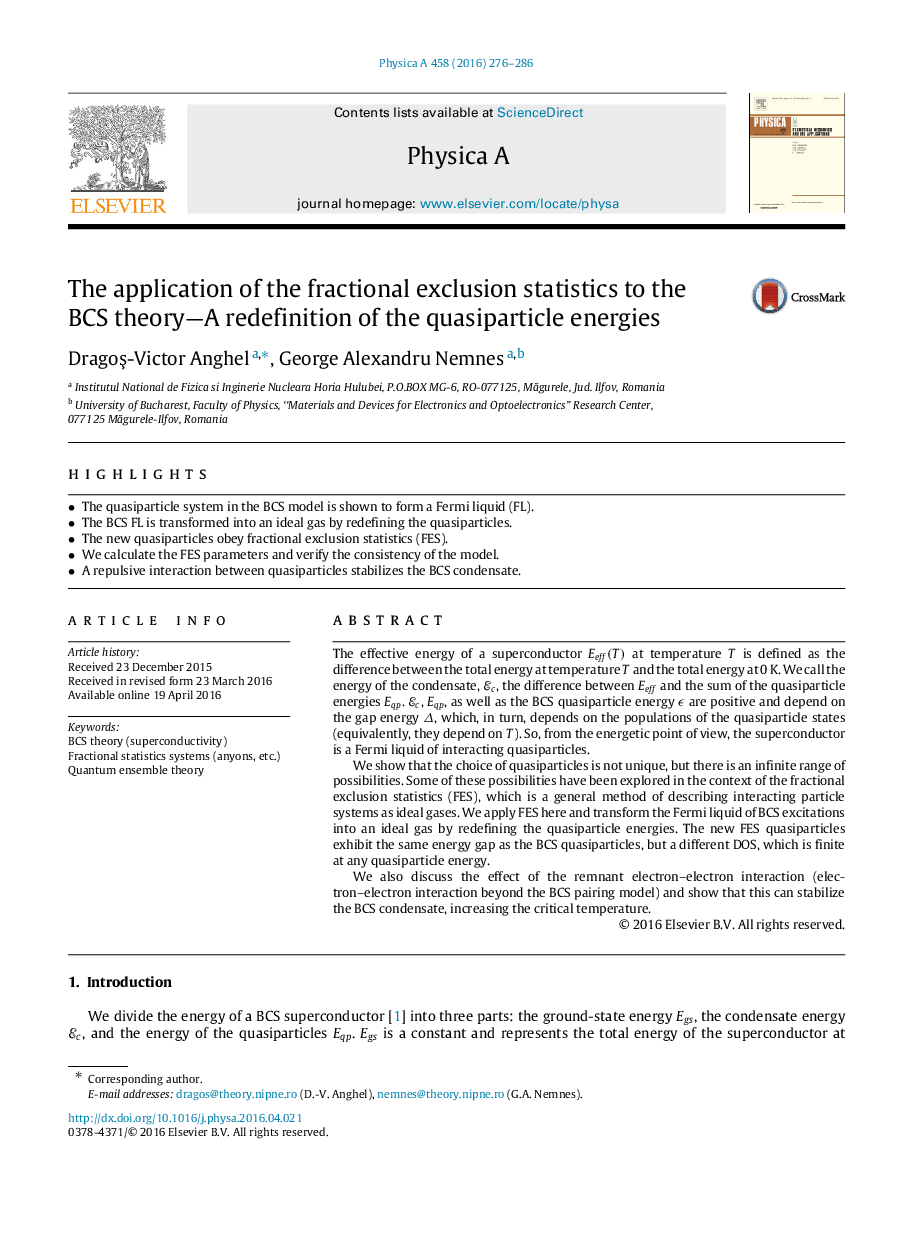| Article ID | Journal | Published Year | Pages | File Type |
|---|---|---|---|---|
| 974342 | Physica A: Statistical Mechanics and its Applications | 2016 | 11 Pages |
•The quasiparticle system in the BCS model is shown to form a Fermi liquid (FL).•The BCS FL is transformed into an ideal gas by redefining the quasiparticles.•The new quasiparticles obey fractional exclusion statistics (FES).•We calculate the FES parameters and verify the consistency of the model.•A repulsive interaction between quasiparticles stabilizes the BCS condensate.
The effective energy of a superconductor Eeff(T)Eeff(T) at temperature TT is defined as the difference between the total energy at temperature TT and the total energy at 0 K. We call the energy of the condensate, EcEc, the difference between EeffEeff and the sum of the quasiparticle energies EqpEqp. EcEc, EqpEqp, as well as the BCS quasiparticle energy ϵϵ are positive and depend on the gap energy ΔΔ, which, in turn, depends on the populations of the quasiparticle states (equivalently, they depend on TT). So, from the energetic point of view, the superconductor is a Fermi liquid of interacting quasiparticles.We show that the choice of quasiparticles is not unique, but there is an infinite range of possibilities. Some of these possibilities have been explored in the context of the fractional exclusion statistics (FES), which is a general method of describing interacting particle systems as ideal gases. We apply FES here and transform the Fermi liquid of BCS excitations into an ideal gas by redefining the quasiparticle energies. The new FES quasiparticles exhibit the same energy gap as the BCS quasiparticles, but a different DOS, which is finite at any quasiparticle energy.We also discuss the effect of the remnant electron–electron interaction (electron–electron interaction beyond the BCS pairing model) and show that this can stabilize the BCS condensate, increasing the critical temperature.
